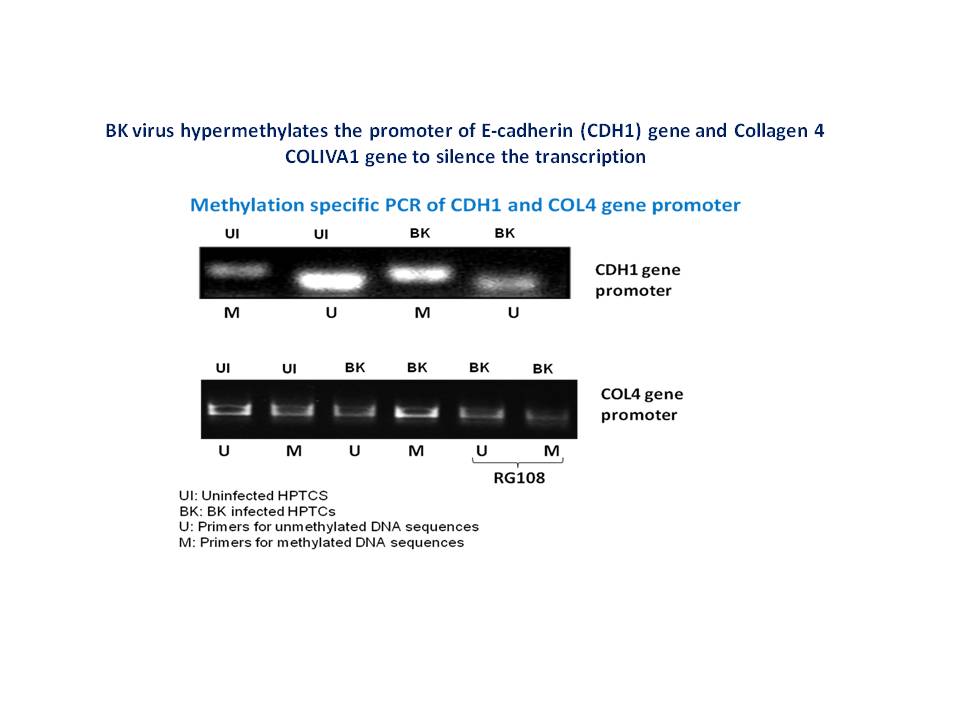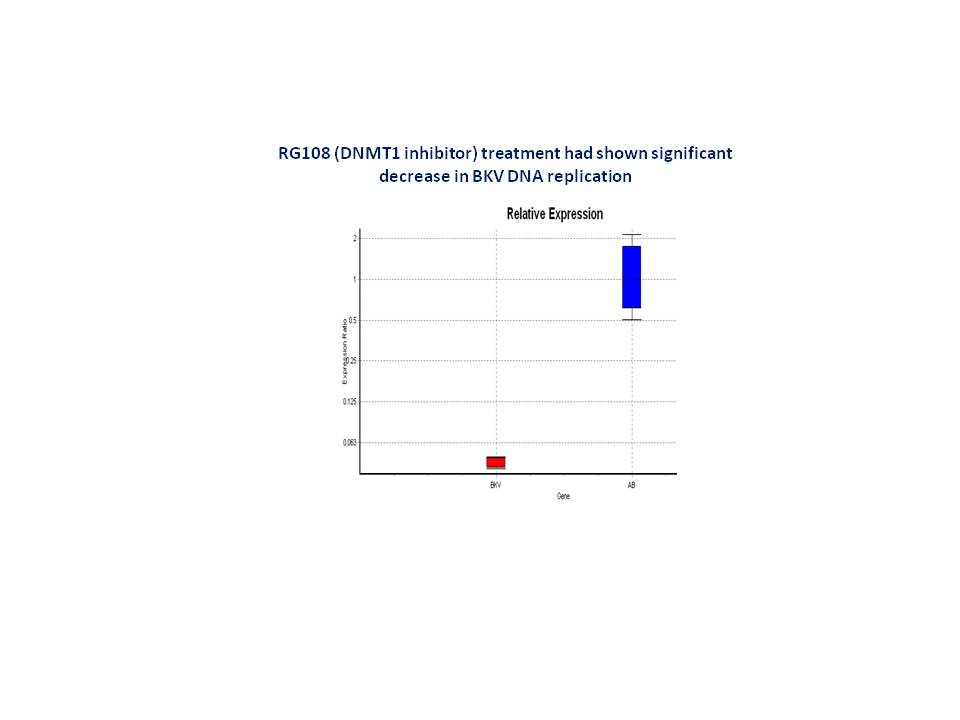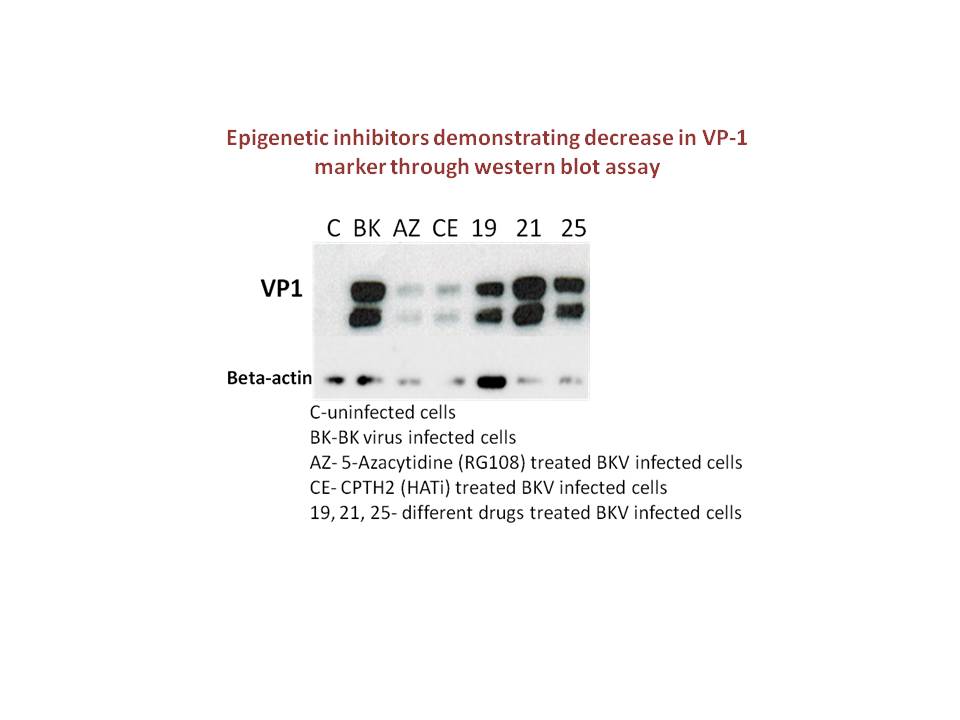Minal Borkar-Tripathi, Canada has been granted the TTS-CST International Transplantation Science Mentee-Mentor Award
Epigenetic Inhibitors as Potential Anti-Viral Treatment against BK Polyoma Virus Associated Nephropathy: An Elucidation of Mechanism
Minal Borkar-Tripathi1, Vikas Srivastava2, Ryan Cunnington1, Steven Greenway3, Lee Anne Tibbles1.
1Cumming School of Medicine, University of Calgary, Calgary, AB, Canada; 2Indian Toxicology Research Institute, Lucknow, India; 3Department of Pediatrics , Alberta Children Hospital, Research Institute, Calgary, AB, Canada
Introduction: BK polyomavirus reactivation in immuno-compromised renal transplant patients may cause rapid graft loss within six months of transplant due to serious complication i.e. BK polyoma virus associated nephropathy (BKPVAN). Due to lack of an appropriate antiviral therapy against BKV it is important to study the underlying mechanism of pathogenesis causing BKPVAN.
Objective: To investigate BKV pathogenesis and to determine the potential anti-viral therapy against BKPVAN.
Methods: Human Proximal Tubular Epithelial Cells (HPTCs) and CCD1105 cell lines were infected with BKV. In order to elucidate the epigenetic mechanism another set of cells were treated with DNA methyl transferase enzyme 1 inhibitor RG108 and Histone acetyl transferase inhibitor CPTH2. Urine samples were collected from BKV viruria/viremia positive patients. RNA/DNA was isolated to perform Methylation Specific PCR (MSP) to assess DNA methylation. Further, Real-time PCR, RNA sequencing, western blot and Immunofluorscence staining were performed.
Results: The downregulation of epithelial cell marker E-cadherin (CDH1) and Collagen-IV (COLIVA1) gene expression was observed in BKV infected cells, whereas, increase in expression of fibrotic marker collagen I suggests that BKV infection induces epithelial mesenchymal transition (EMT). MSP confirmed silencing of those genes through a DNA methylation mechanism by demonstrating hypermethylation of the promoters of CDH1 and COLIVA1 genes in primary cells  and patient’s samples. Imunofluorescence staining has shown an increase in Vimentin and disruption of actin filaments in BKV infected cells confirming EMT. RG108 treatment, a demethylating agent, has shown altered COLIVA expression and a decrease in methylation of the promoter, demonstrating that BKV uses DNA methylation for inducing EMT and eventually fibrosis.
and patient’s samples. Imunofluorescence staining has shown an increase in Vimentin and disruption of actin filaments in BKV infected cells confirming EMT. RG108 treatment, a demethylating agent, has shown altered COLIVA expression and a decrease in methylation of the promoter, demonstrating that BKV uses DNA methylation for inducing EMT and eventually fibrosis.
We observed that BKV hypermethylates the RB1 gene promoter to silence it and instigate host cell division for its own replication however, RG108 treatment had demonstrated significant decrease in BKV DNA (p-value<0.037)  .
.
RNA sequencing data has revealed that GCN5 (HAT family) expression is increased in BKV infected cells which is required for viral pathogenesis and during replication whereas HATi treatment has shown significant decrease in VP1 expression (the marker of BKV infection)  conferring that histone modification also plays an important role in BKV pathogenesis.
conferring that histone modification also plays an important role in BKV pathogenesis.
Conclusion: Investigating BKV pathogenesis from an epigenetic point of view revealed that BKV orchestrates EMT and pathogenesis by using a DNA methylation and histone modification mechanisms. The use of DNMTi and HATi could reverse or prevent progression of disease and block BKV replication, therefore, these epigenetic inhibitors widely used in cancer treatment, may be potentially useful as an antiviral therapy for BKPVAN.
Prognostic Biomarkers and Potential Treatment for BK Polyomavirus Associated Nephropathy
Minal Borkar-Tripathi1, Vikas Srivastava1, Ryan Cunnington1, Steven Greenway1, Lee Anne Tibbles1.
1Cumming School of Medicine, University of Calgary, Calgary, AB, Canada
Introduction: BK polyomavirus reactivation in kidney causes acute kidney disease in immuno-compromised renal transplant patients. Due to lack of an appropriate antiviral therapy against BKV it is important to study the underlying mechanism of pathogenesis causing BK polyoma virus associated nephropathy (BKPVAN).
Objective: To investigate BKV pathogenesis from an epigenetic point of view and to determine the potential anti-viral therapy against BKPVAN.
Methods: Human Proximal Tubular Epithelial Cells (HPTCs) and CCD1105 cell lines were infected with BKV. Another set of cells were treated with DNMT1 inhibitor RG108. Urine samples were collected from BKV viruria/viremia positive patients. RNA/DNA was isolated to perform Methylation Specific PCR (MSP) to assess DNA methylation. Expression study was done by using Real-time PCR and western blot assays. Immunofluorscence staining experiment and flow cytometry were performed to demonstrate fibrosis and necroptosis respectively.
Results: The downregulation of E-cadherin (CDH1) and Collagen-IV (COLIVA1) gene expression was observed in BKV infected cells, whereas, increase in expression of fibrotic marker collagen I suggests that BKV infection induces epithelial mesenchymal transition (EMT). MSP confirmed silencing of those genes through a DNA methylation mechanism by demonstrating hypermethylation of the promoters of CDH1 and COLIVA1 genes in patient’s samples. Imunofluorescence staining has shown an increase in Vimentin and disruption of actin filaments in BKV infected cells confirming EMT. RG108 treatment, a demethylating agent, has shown altered COLIVA expression and a decrease in methylation of the promoter, demonstrating that BKV uses DNA methylation for inducing EMT and eventually fibrosis.
The protein study confirmed that BKV induced necroptosis by inducing the expression of Receptor-interacting serine/threonine-protein kinase 3, and phospho-Mixed Lineage Kinase Like-pseudokinase and High Mobility Group Protein B1. Regulation by RG108 indicated that BKV may induce necroptosis epigenetically.
We observed that BKV hypermethylates the RB1 gene promoter to silence it and instigate host cell division for its own replication however, RG108 treatment had demonstrated significant decrease in BKV DNA (p-value<0.037).
Conclusion: We have investigated BKV pathogenesis from an epigenetic point of view and we are the first to report that BKV orchestrates EMT and necroptosis by using a DNA methylation mechanism. The hypermethylated promoters of genes could serve as prospective biomarkers for prognosis of fibrosis. The use of DNMT inhibitors could reverse or prevent progression of fibrosis and block BKV replication, therefore, may be potentially useful as an antiviral therapy. However, further studies exploiting DNA methylation mechanism are needed to prevent graft loss due to BKPVAN.
Canadian National Transplant Research Program and Alberta Transplant Institute provided fund as Fellowship to Minal Borkar-Tripathi for pursuing postdoctoral research.
